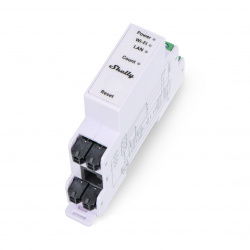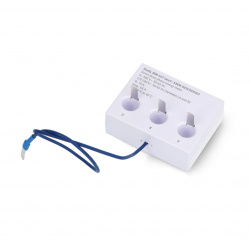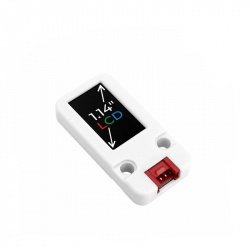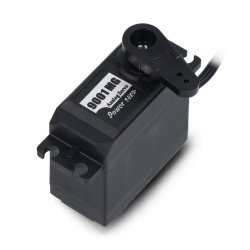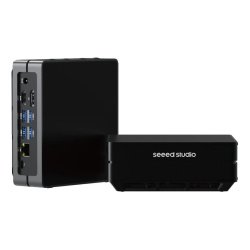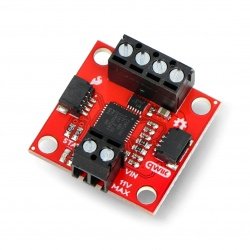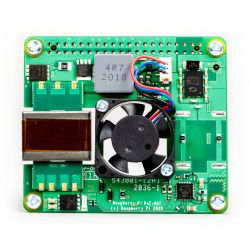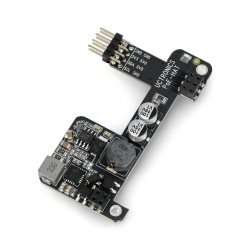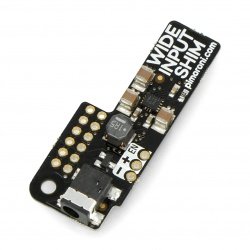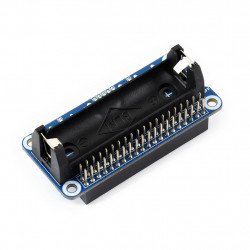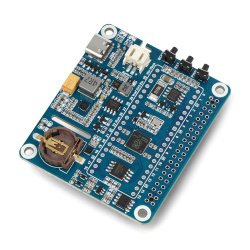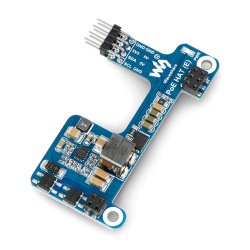Power supply is one of the key areas of any computer ensuring its smooth and reliable operation. Thanks to it we can always count on proper device preparation for work. This is why we have created HAT power overlays dedicated for Raspberry Pi microcomputers. Their function is important because they create huge possibilities of system expansion, which guarantees reliable power supply. The overlays are connected using GPIO connector. Furthermore, it is equipped with battery charge indicators, so that the battery is under control the entire time. We know what the current state of battery charge is. There are many ways to charge your battery. The battery can be recharged from small wind turbines as well as from photovoltaic panels, which means that it can be recharged using renewable energy. This is an increasingly popular trend, related to greater awareness of human impact on the environment. We offer a wide range of power supplies. Both lithium-ion and lithium-polymer batteries are available in the shop. You can choose the supply voltage and capacity by adjusting the technical parameters of the batteries to your individual needs and expectations that you have of your Raspberry Pi equipment.
Raspberry Pi Hat - power supply
Raspberry Pi PoE+ HAT - Power over Ethernet for Raspberry Pi 4B/3B+ - SC1022
Cap designed for Raspberry Pi 3B+ and 4B versions which are equipped with 4-pin PoE connector. It allows simultaneous communication with LAN and powering the minicomputer...Uninterruptible power supply UPS - Power adapter for Raspberry Pi - 5 V - Waveshare 18306
UPS power supply in the form of an overlay for Raspberry Pi , which brings extra power to the module in case of power failure or while traveling. It is powered by two 18650...Raspberry Pi PoE HAT - for Raspberry Pi 4B/3B+ - IEEE 802.3af - Uctronics U6241
Shield for Raspberry Pi working with the use of PoE technology , which allows you to power the raspberries via an Ethernet cable. It complies with the IEEE 802.3af standard....UPS HAT for Raspberry Pi Zero - Waveshare 19739
The UPS overlay provides uninterrupted power to the Raspberry Pi Zero minicomputer, thanks to the Li-Pol battery, when the power from the Raspberry Pi Zero power supply...LiPo SHIM - power supply extension for Raspberry Pi
LiPo PWM is an extension for Raspberry Pi mounted directly on the GPIO connector of the minicomputer. The device has JST 2.0 mm 2-pin connectors for connecting the...Mini PoE Hat - PoE module for Raspberry Pi 4B/3B+/3B + fan - UCTRONICS U6110
A cap to power Raspberry Pi minicomputers using Power over Ethernet technology. This solution allows you to power the minicomputer using a network cable with an RJ-45...UPS HAT for Raspberry Pi Zero - DFRobot DFR0528
A cap designed for the Raspberry Pi Zero , serving as an emergency power supply in the event of a mains power failure. The module is also compatible with other versions of...Trim UPS for Raspberry Pi DFRobot DFR0494
A cap designed for the Raspberry Pi 3B/2B/B+, serving as an emergency power supply in case of mains power failure . The HAT UPS will power the device for a certain period of...PoE Ethernet / USB HUB HAT for Raspberry Pi Zero - Waveshare 19635
An overlay that combines the function of a USB hub and a PoE power supply. Created by Waveshare module based on RTL8152B chip, extends functionality of Raspberry Pi Zero by 3...Wide Input Shim KIT - power supply module for Raspberry Pi 3-16V
Module in the form of a hat for Raspberry Pi, which allows to supply power to a minicomputer with voltage from 3 V to 16 V. This allows the cooperation of different power...Li-Ion Battery HAT for Raspberry Pi - Waveshare 15141
Panel based on the system SW6106, enables powerring the Raspberry Pi using the rechargeable Li-Ion battery 14500, which makes the device portable. The device can also be used...Power Management Hat (B) - hat for Raspberry Pi - Waveshare 23452
Power Management Hat (B) is an overlay designed for the Raspberry Pi board that allows you to manage energy. The overlay is equipped with a dual-core RP2040 processor with...See also
Emergency power supply for Raspberry Pi
Not everyone is aware of the role of emergency power supply for Raspberry Pi. Improper shutdown of the system may result in undesirable changes in the structure of the device. It seems that it is enough to shut down the system and turn off the computer's power after finishing working on it. However, it may happen that the power will be turned off while files are still being saved. There is a high risk that in this case the files will be permanently damaged and it will be impossible to open them. Such a power off may be initiated by the user, but sometimes the user is not responsible for it. Sometimes there is a power outage from the power grid. Then we have no control over the power supply to our device and everything happens without our intervention. As a result, we may lose the effects of our previous work. Furthermore, this also has a negative impact on the operation of Raspberry Pi.
However, unwanted shutdown of the microcomputer can be avoided. Just use the overlay, equipped with a special battery. It is this battery that allows you to maintain continuity of power supply even in crisis and emergency situations. As a result, the risk of loss and damage of files, as well as the results of our hard and long work, is significantly reduced. Emergency power supply also has an impact on Raspberry life span, allowing it to work longer and more efficiently.
Power overlays for Raspberry Pi and their various variants.
We rely only on modern and reliable solutions, so we have chosen the Olmatic S.USV overlays for our customers, which contain a 300 mAh lithium-polymer battery with a voltage of 3.7V. To connect the battery to the board, just use a standard 2-pin JST connector and a 2 mm grid. The battery is continuously charged due to the built-in battery charging circuit. It works in a voltage holding mode. The indicator shows the status of its charge in the form of LEDs.
You can also opt for the Advanced version, which can supply 7-24 volts. This works very well if the power supply is through photovoltaic panels. The overlay also has a 40-pin GPIO connector and a real time clock. It communicates with Raspberry Pi via the I2C interface. If there is a hardware conflict, it is possible to change the interface addressing via software.
Make sure your Raspberry works continuously and under good conditions. It will provide it with an emergency power supply so that your files are properly protected against damage and possible loss of data. Raspberry Pi HAT power overlays are one of the ways to protect your microcomputer from losing the effects of hard work on advanced and ambitious projects.
































































































































































































































































































































